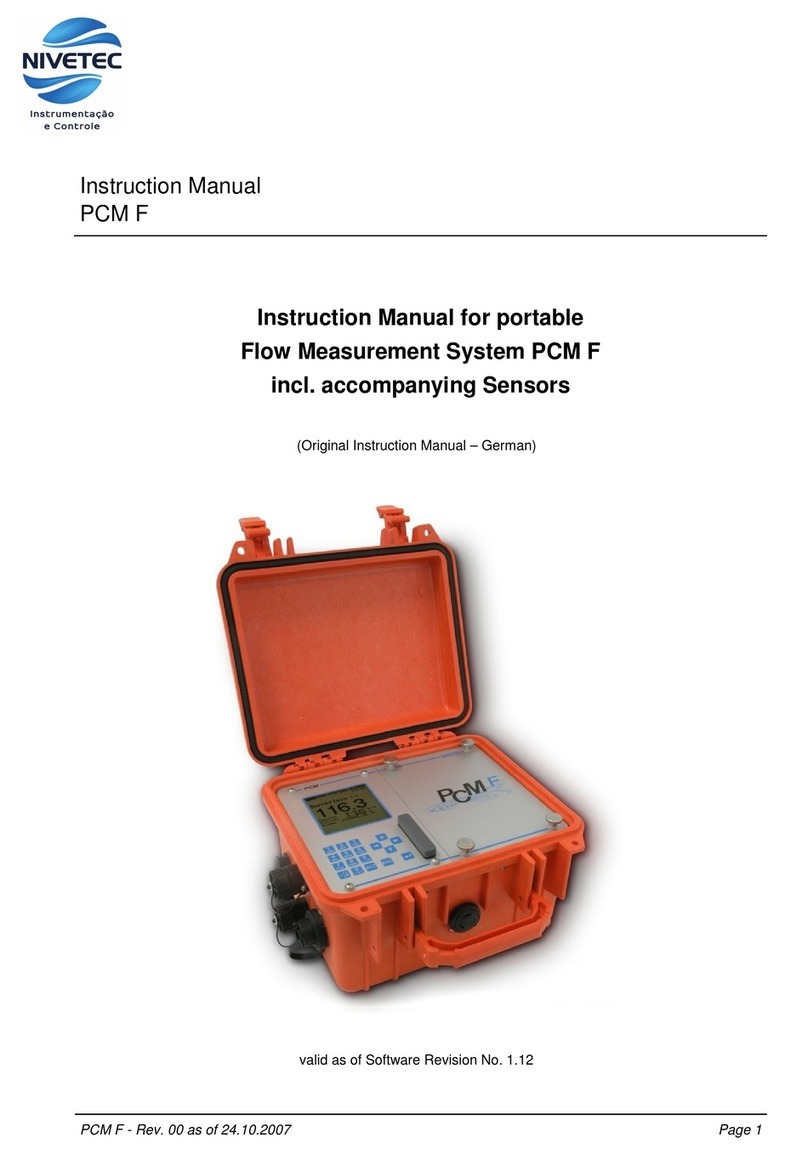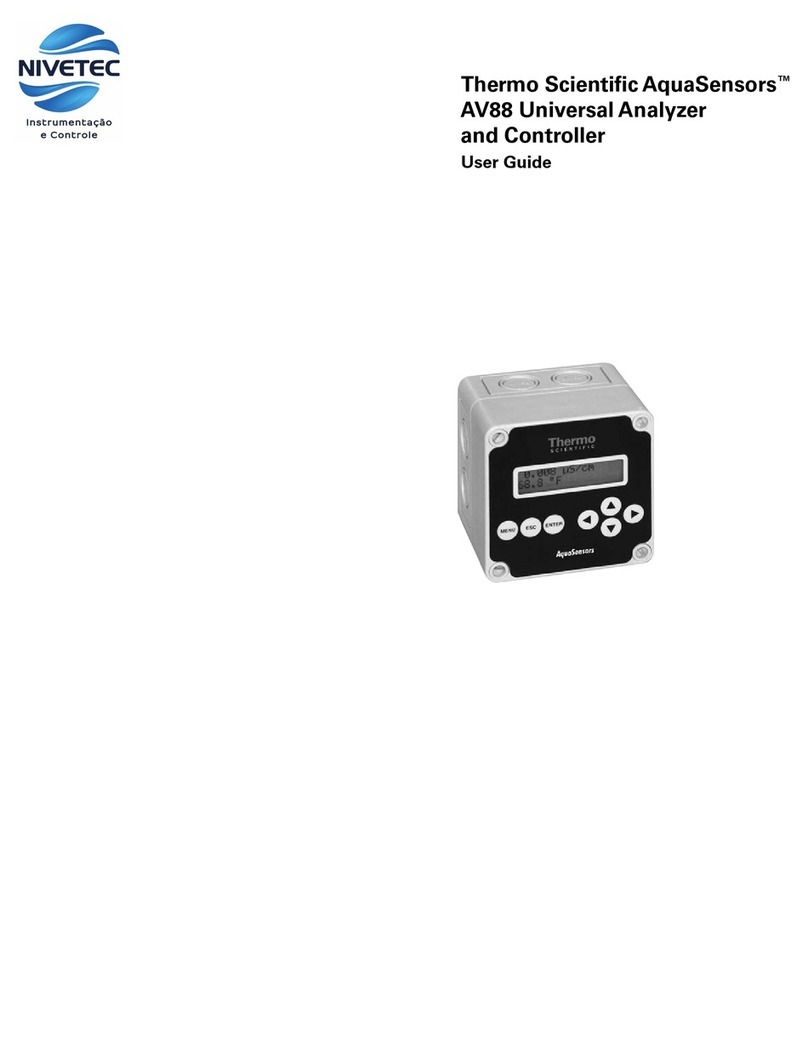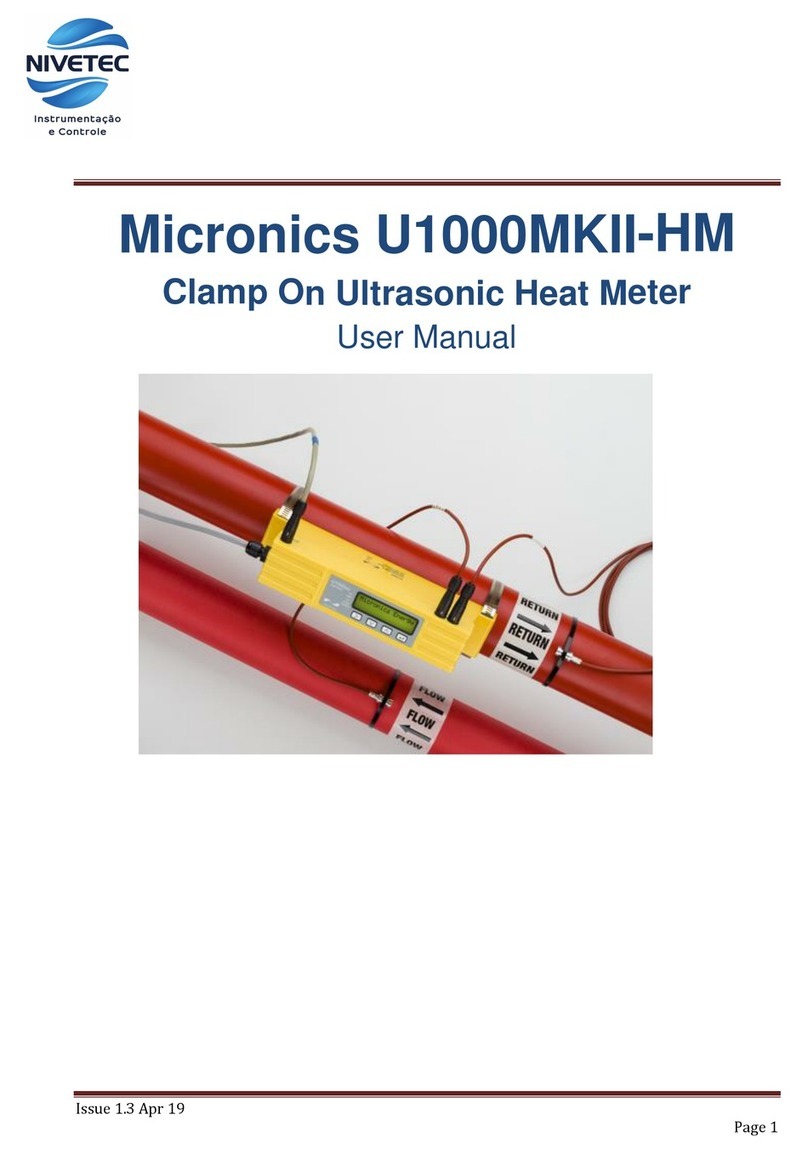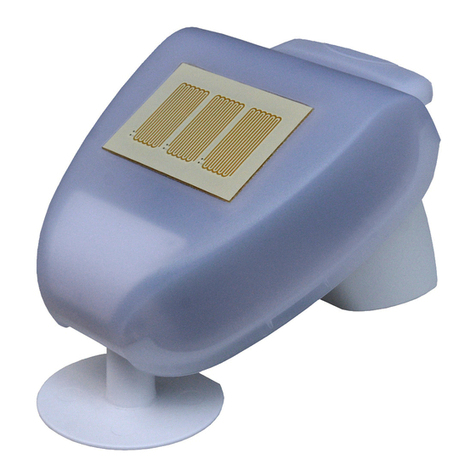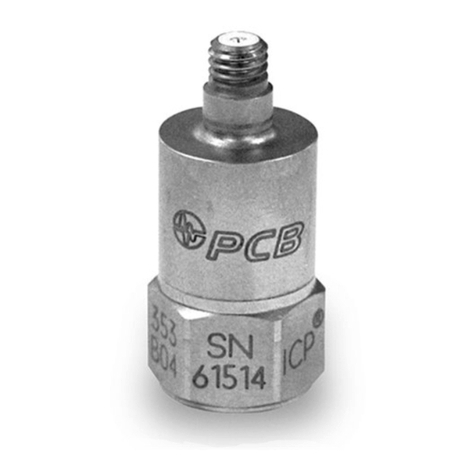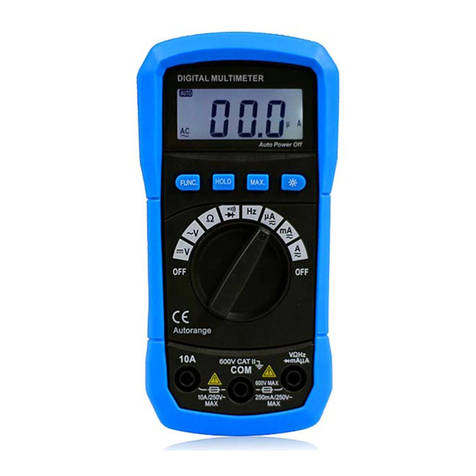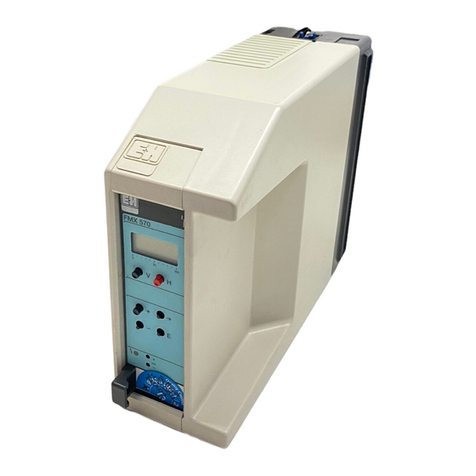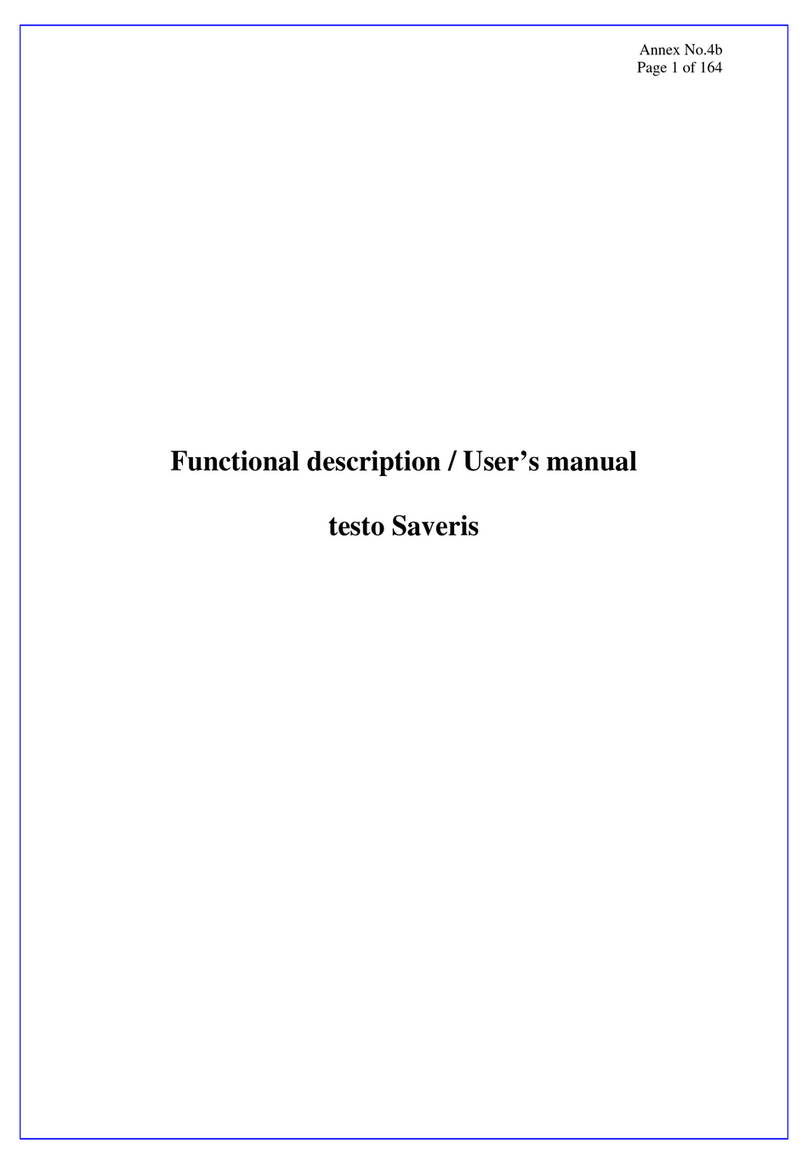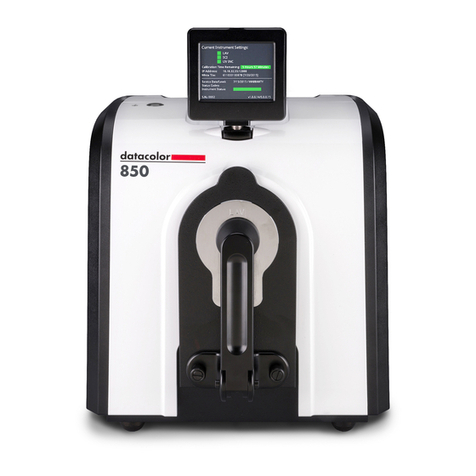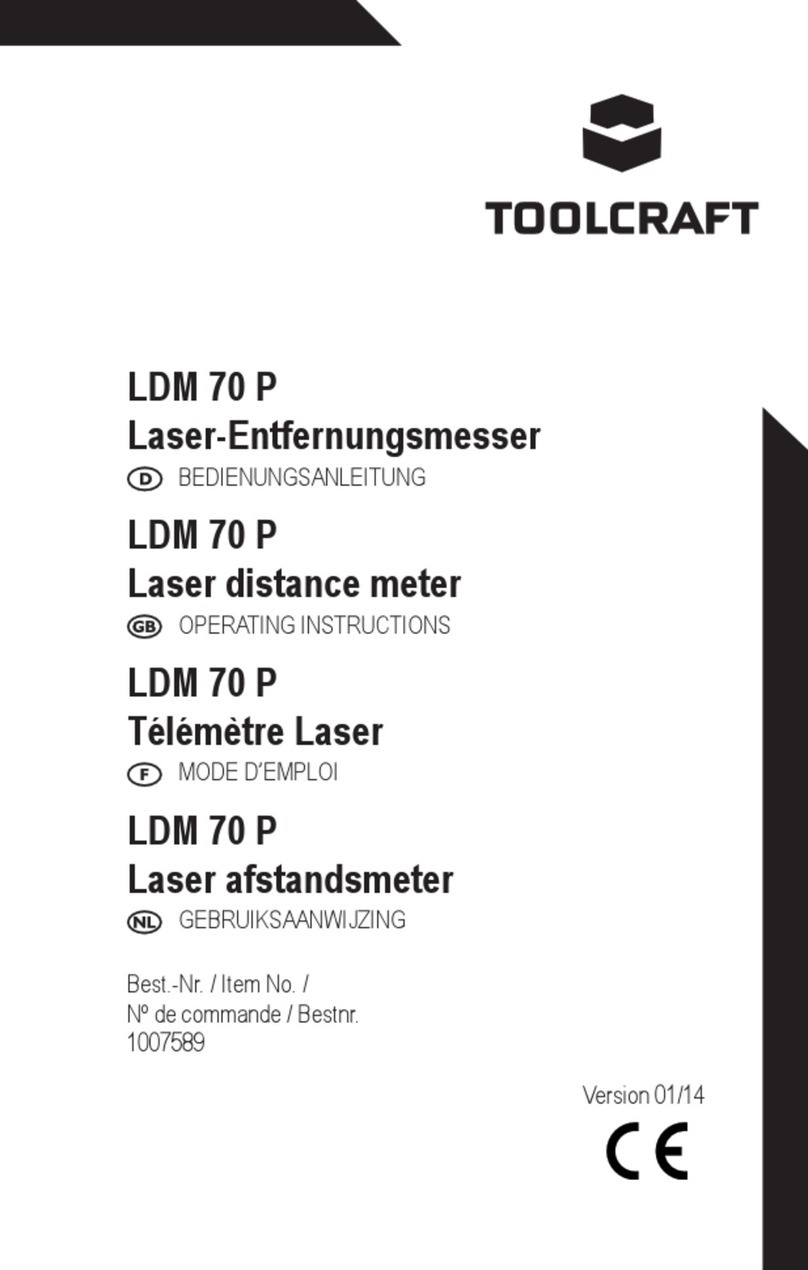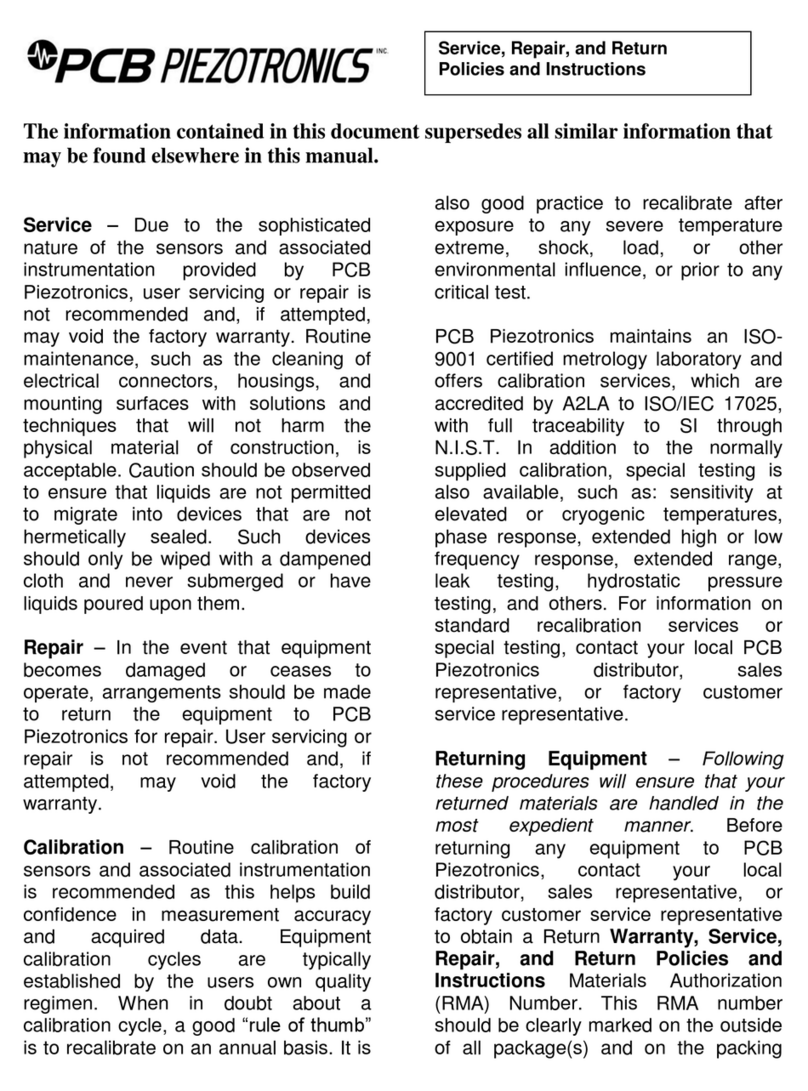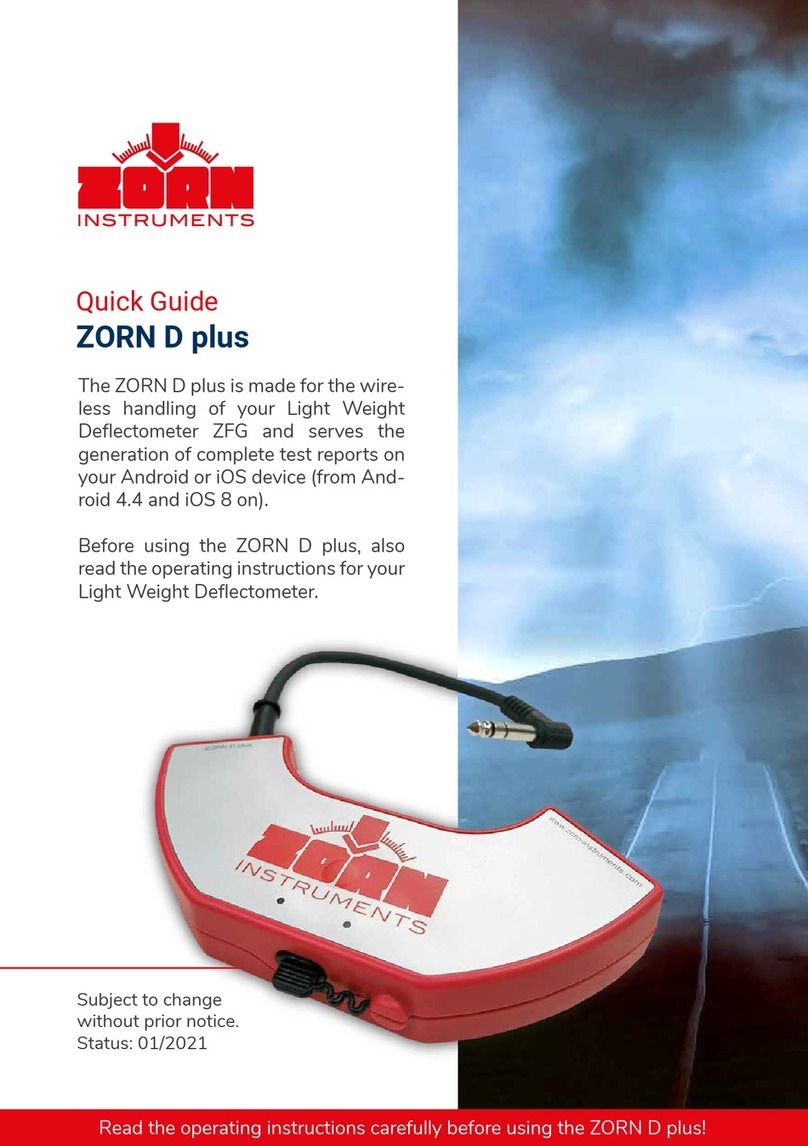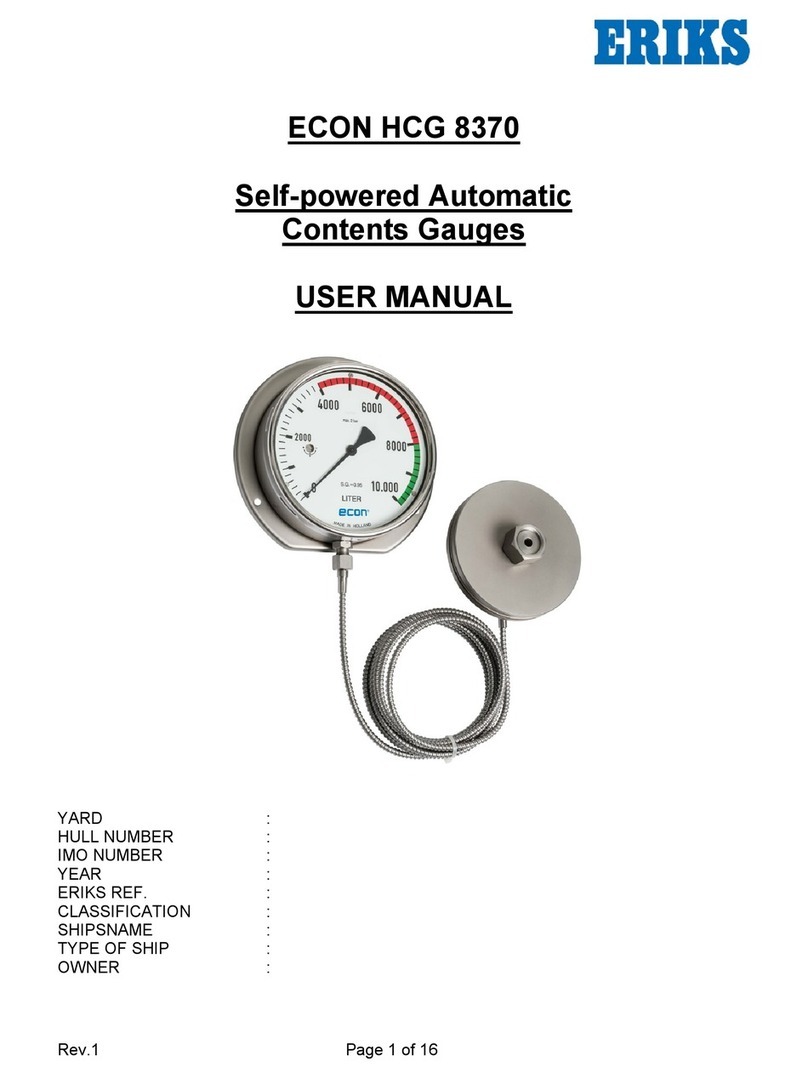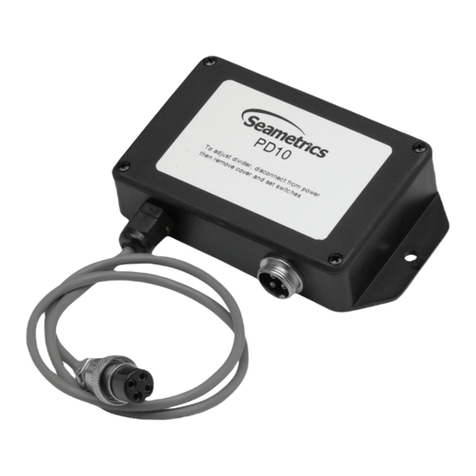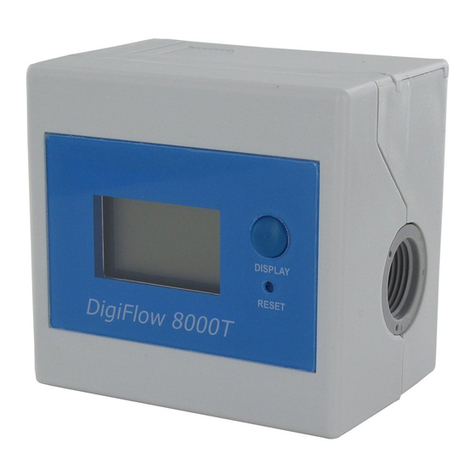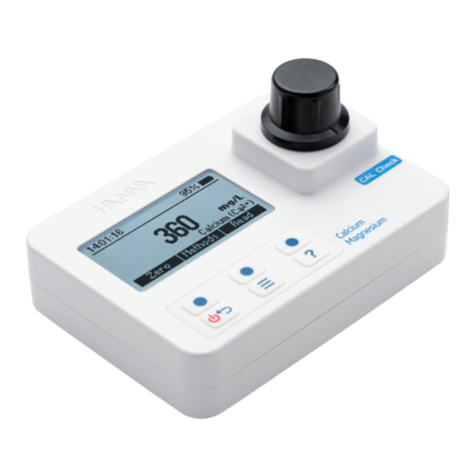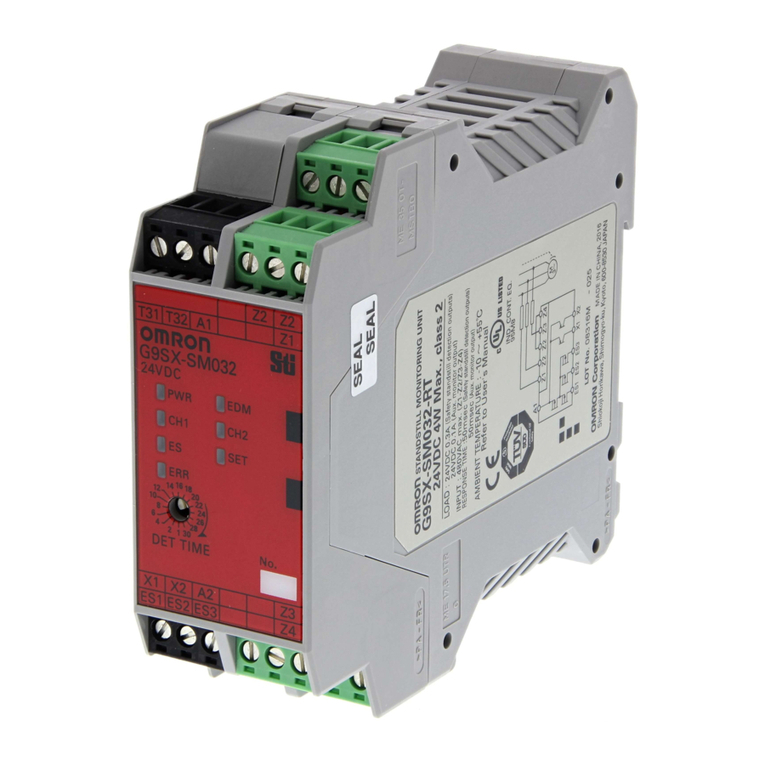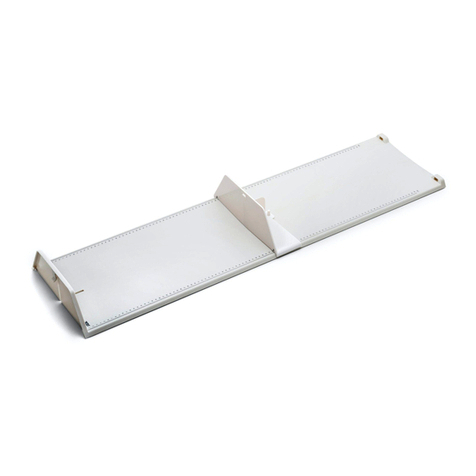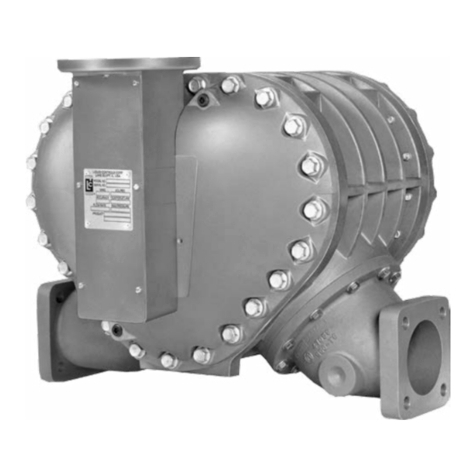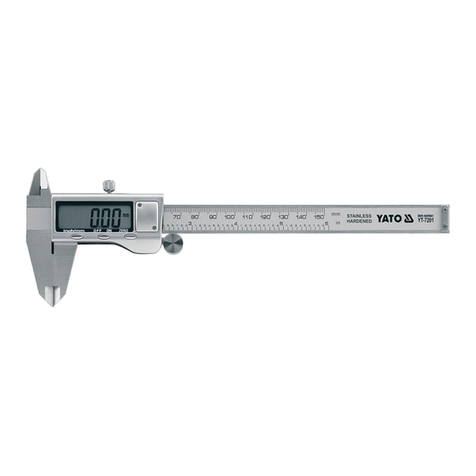Nivetec Micronics U1000-HM User manual

Issue 2.2
Page 1
Micronics U1000-HM
Clamp On Ultrasonic Heat Meter
User Manual

Micronics U1000-HM User Manual
Issue 2.2
Page 2
Table of Contents
1General Description..................................................................................................................................... 3
2Quick Start Procedure ................................................................................................................................. 4
3How does it work? ....................................................................................................................................... 5
4User interface .............................................................................................................................................. 6
4.1 Key switches........................................................................................................................................ 6
5Installing the U1000-HM.............................................................................................................................. 7
5.1 Preparation .......................................................................................................................................... 8
5.2 Sensor separation................................................................................................................................ 8
5.3 Attaching the U1000-HM to the pipe ................................................................................................. 10
5.4 Adaptors for small pipes.................................................................................................................... 11
5.5 Attaching the Temperature sensors .................................................................................................. 12
5.6 U1000-HM interface cables............................................................................................................... 13
5.7 Connecting the U1000-HM to the Supply.......................................................................................... 13
5.8 Pulse Output connection.................................................................................................................... 15
5.9 Modbus connections.......................................................................................................................... 15
5.10 Cable Screen..................................................................................................................................... 15
6Powering up for the first time..................................................................................................................... 16
6.1 How to enter the Pipe ID.................................................................................................................... 18
6.2 Pulse output....................................................................................................................................... 19
6.2.1 Volumetric mode........................................................................................................................ 19
6.2.2 Frequency mode........................................................................................................................ 19
6.2.3 Energy........................................................................................................................................ 19
6.2.4 Low Flow Alarm ......................................................................................................................... 19
6.3 Modbus.............................................................................................................................................. 20
7Subsequent Power-ON Sequence ............................................................................................................ 21
7.1 Information screens ........................................................................................................................... 21
8Password Controlled Menus...................................................................................................................... 22
8.1 General procedure for changing menu settings ................................................................................ 22
8.1.1 Selection menus ........................................................................................................................ 22
8.1.2 Data entry menus ...................................................................................................................... 22
8.2 User Password controlled menu structure......................................................................................... 22
9Diagnostics Menu ...................................................................................................................................... 28
10 Relocation of guide rail.......................................................................................................................... 29
11 Appendix I –U1000-HM Specification................................................................................................... 30
12 Appendix II –Default values.................................................................................................................. 32
13 Appendix III –Error and Warning Messages......................................................................................... 33
14 Declaration of conformity ………………………….……………………………………………...……………..33

Micronics U1000-HM User Manual
Issue 2.2
Page 3
1 General Description
Fixed installation, clamp-on heat meter
Easy to install
Requires the minimum of information to be entered by the user
Electronics and guide rail housings form an integral unit
Attached to the pipe using the supplied jubilee clips
Power to the unit is provided by an external 12 - 24V ac/dc power supply (7VA minimum)
Operates on steel, copper and plastic pipes with IDs in the range 20mm (0.8”) to 110mm (4”)
and a maximum wall thickness limit of 9mm for metal pipes and 10.5mm for plastic
Simple to install temperature sensors
Compact, rugged and reliable, the U1000-HM has been designed to provide sustained
performance in industrial environments
.
U1000 standard features include:
2 line x 16 character LCD with backlight
4-key keypad
Isolated pulse output
Universal guide rail for setting pre-assembled transducers
Two sets of self-adhesive Gel pad acoustic couplant
Dual PT type temperature sensors (standard cable length 3m)
Continuous signal monitoring
Password protected menu operation for secure use
Operates from external 12 to 24Vac or dc power supplies
Small pipe adaptors
Modbus RTU data interface
Typical applications
Domestic, building services and industrial water systems heat metering.

Micronics U1000-HM User Manual
Issue 2.2
Page 4
2 Quick Start Procedure
The following procedure details the steps required to set up the heat meter. See the sections
referred to if you are unsure about how to install the instrument.
1. Wire the electronics up to a 12 to 24V ac or dc power supply (7VA minimum per instrument)
via the Blue and Brown wires. (See Section 5.7).
2. Establish a suitable location for the flow meter on a straight length of pipe clear of bends and
valves or similar obstructions. (See Sections 5 and 5.1).
3. Determine the pipe internal diameter and material.
4. Either use the table in the manual, or power up the instrument to determine the correct
separation code. (See Sections 5.2 or 6).
5. Set the sensors to the correct separation by adjusting the sensor holding screws so the sensor
can slide in the slot. (See Section 5.2).
6. Select any adaptors needed for pipes with an outside diameter of less than 60mm, inside
diameter will typically be less than 50mm. (See Section 5.4).
7. Apply the Gel pads to the sensors and mount the guide rail on the pipe using the banding
provided, then remove the sensor holding screws. (See Section 5.3).
8. Plug in the flow and temperature sensors and check that flow and temperature readings can
be obtained. (See sections 6 and 7.1). The electronics can be left resting on the guidrail and
fully clipped down later once all measurements have been checked.
9. Place the temperature sensors touching each other. Wait for the temperature readings to
stabilize, indicated by no change for 30 seconds. Then zero the temperature sensors. (See
Section 5.5).
10. Attach the temperature sensors on to the pipe using the self-adhesive pads. Then use the
supplied banding to secure the sensor to the pipe. Don’t overtighten the banding. The sensor
must be in good thermal contact with the pipe and the leads must not be under any strain.
(See Section 5.5).
11. Once good readings have been obtained any further changes, such as selecting different
units, can be made via the User Menu. (See Section 8).
12. Clip the electronics assembly on to the guide rail to complete the assembly.
13. If the Modbus interface is being used then the address and data rate of the instrument must
be set using the User Menu. (See Section 8). The default address is 1 and the default data
rate is set to 38400.

Micronics U1000-HM User Manual
Issue 2.2
Page 5
3 How Does It Work?
The U1000-HM is a clamp-on, ultrasonic flowmeter that uses a multiple slope transit time algorithm
to provide accurate flow measurements.
An ultrasonic beam of a given frequency is generated by applying a repetitive voltage pulse to the
transducer crystals. This transmission goes first from the Downstream transducer to the Upstream
transducer (red) as shown in the upper half of Figure 1. The transmission is then made in the reverse
direction, being sent from the Upstream transducer (red) to the Downstream transducer (blue) as
shown in the lower half of Figure1. The speed at which the ultrasound is transmitted through the liquid
is accelerated slightly by the velocity of the liquid through the pipe. The subsequent time difference
T1 –T2 is directly proportional to the liquid flow velocity.
The two temperature sensors measure the difference in temperature between inlet and outlet of the
flow system being monitored. The temperature difference, in combination with the volume of water
that has flowed through the system, is then used to calculate the energy transferred to or from the
water.
Figure 1 Principle of Transit-Time operation

Micronics U1000-HM User Manual
Issue 2.2
Page 6
4 User Interface
Figure 2 illustrates the U1000-HM user interface comprising:-
One 2 line x 16 character LCD with backlight
Four tactile key switches
Two LEDs
4.1 Key Switches
kWh LED, this pulses each time an energy pulse is sent by the instrument.
Pulse Enabled LED is illuminated when the Pulse output is ON.
Figure 2 U1000-HM User Interface
Selection key. Allows the user to select between options on the
display.
Used to decrement the value of each digit in numeric entry fields.
Used to increment the value of each digit in numeric entry fields.
Used to enter the selection displayed or terminate the data entry.
Pressing this key can also take the user to a sub menu or to the
Flow Reading screen.
Λ
>
V
Sig : 87% *
246.3 l/min

Micronics U1000-HM User Manual
Issue 2.2
Page 6
4 User Interface
Figure 2 illustrates the U1000-HM user interface comprising:-
One 2 line x 16 character LCD with backlight
Four tactile key switches
Two LEDs
4.1 Key Switches
kWh LED, this pulses each time an energy pulse is sent by the instrument.
Pulse Enabled LED is illuminated when the Pulse output is ON.
Figure 2 U1000-HM User Interface
Selection key. Allows the user to select between options on the
display.
Used to decrement the value of each digit in numeric entry fields.
Used to increment the value of each digit in numeric entry fields.
Used to enter the selection displayed or terminate the data entry.
Pressing this key can also take the user to a sub menu or to the
Flow Reading screen.
Λ
>
V
Sig : 87% *
Sig : 87% *
246.3 l/min

Micronics U1000-HM User Manual
Issue 2.2
Page 6
4 User Interface
Figure 2 illustrates the U1000-HM user interface comprising:-
One 2 line x 16 character LCD with backlight
Four tactile key switches
Two LEDs
4.1 Key Switches
kWh LED, this pulses each time an energy pulse is sent by the instrument.
Pulse Enabled LED is illuminated when the Pulse output is ON.
Figure 2 U1000-HM User Interface
Selection key. Allows the user to select between options on the
display.
Used to decrement the value of each digit in numeric entry fields.
Used to increment the value of each digit in numeric entry fields.
Used to enter the selection displayed or terminate the data entry.
Pressing this key can also take the user to a sub menu or to the
Flow Reading screen.
Λ
>
V
Sig : 87% *
Sig : 87% *
246.3 l/min

Micronics U1000-HM User Manual
Issue 2.2
Page 7
5 Installing The U1000-HM
Figure 3 Location of Transducers
For correct measurement of the energy transfer being measured by the instrument the flow
measurement needs to be made on the hot side of the system as near to the hot temperature sensor
as possible.
In many applications an even flow velocity profile over a full 360° is unattainable due, for example, to
the presence of air turbulence at the top of the flow and possibly sludge at the bottom of the pipe.
Experience has shown that the most consistently accurate results are achieved when the transducer
guide rails are mounted at 45°with respect to the top of the pipe.
The U1000-HM equipment expects a uniform flow profile, as a distorted flow will produce
unpredictable measurement errors. Flowprofile distortions can result from upstream disturbance such
as bends, tees, valves, pumps and other similar obstructions. To ensure a uniform profile the
transducers must bemounted far enough away from any cause of distortion such that it no longer has
an effect.
To obtain the most accurate results the condition of both the liquid and the pipe must be suitable to
allow ultrasound transmission along the predetermined path. It is important that liquid flows uniformly
within the length of pipe being monitored, and that the flow profile is not distorted by any upstream or
downstream obstructions. This is best achieved by ensuring there isa straight length of pipe upstream
of the transducers of at least 20 times the pipe diameter, and 10 times the pipe diameter on the
downstream side, as shown in Figure 3. Flow Measurements can be made on shorter lengths of
straight pipe, down to 10diameters upstream and 5 diameters downstream, but when the transducers
are mounted this close to any obstruction the resulting errors can be unpredictable.
Key Point: Do not expect to obtain accurate results if the transducers are positioned close to any
obstruction that distorts the uniformity of the flow profile.
Micronics Ltd accepts no responsibility or liability if product has not been installed in accordance with
the installation instructions applicable to the product.
Possible Air
Possible
sludge
Guide
rail
Uniform Flow Profile
Distorted Flow Profile
Flow
Flow
Valid transducer location
20 x Diameter
10 x Diameter

Micronics U1000-HM User Manual
Issue 2.2
Page 8
5.1 Preparation
1. Before attaching the transducers, first ensure that the proposed location satisfies the distance
requirements shown in Figure 3 otherwise the resulting accuracy of the flowreadings may be affected.
The unit is preconfigured for the application as follows :-
Instrument Type Heating or Chiller
Installation Flow or Return
Fluid Water or Water + 30% Ethylene Glycol
Flow and Return refer to the location of the Flow measurement relative to flow circuit.
Details of this configuration can be found in the Diagnostics menu. (See Section 9).
2. Preparethe pipe by degreasing it and removingany loose materialor flaking paint in order to obtain
the best possible surface. A smooth contact between pipe surface and the face of the transducers is
an important factor in achieving a good ultrasound signal strength and therefore maximum accuracy.
5.2 Sensor Separation
The sensors must be separated by the correct distance for the pipe size and type they will be used
on. The table below gives the typical separation code for a given pipe material and inside diameter,
based on a 4mm wall thickness. If the wall thickness is significantly different from this value then the
separation may need to be one code higher or lower. The instrument displays the required separation
after the pipe internal diameter and material are entered.
Pipe material
Plastic and Copper
Steel
Plastic and Copper
Steel
Water
30% Glycol
Separation
mm
Inches
mm
Inches
mm
Inches
mm
Inches
B1
20-24
0.79-0.94
---
20-22
0.79-0.87
A2
25-30
0.98-1.18
20-22
0.79-0.87
23-27
0.91-1.06
20
0.79
C1
31-36
1.22-1.42
23-28
0.91-1.10
28-33
1.10-1.30
21-26
0.83-1.02
B2
37-42
1.46-1.65
29-34
1.14-1.34
34-38
1.34-1.50
27-31
1.06-1.22
A3
43-48
1.69-1.89
35-40
1.38-1.57
39-44
1.54-1.73
32-37
1.26-1.46
C2
49-54
1.93-2.13
41-46
1.61-1.81
45-50
1.77-1.97
38-42
1.50-1.65
B3
55-60
2.17-2.36
47-52
1.85-2.05
50-55
1.97-2.17
43-48
1.69-1.89
D2
61-65
2.40-2.56
53-58
2.09-2.28
56-61
2.20-2.40
49-53
1.93-2.09
C3
66-71
2.60-2.80
59-64
2.32-2.52
62-66
2.44-2.60
54-59
2.13-2.32
B4
72-77
2.83-3.03
65-70
2.56-2.76
67-72
2.64-2.83
60-64
2.36-2.52
D3
78-83
3.07-3.27
71-76
2.80-2.99
73-77
2.87-3.03
65-70
2.56-2.76
C4
84-89
3.31-3.50
77-82
3.03-3.23
78-83
3.07-3.27
71-76
2.80-2.99
E3
90-95
3.54-3.74
83-88
3.27-3.46
84-88
3.31-3.46
77-81
3.03-3.19
D4
96-101
3.78-3.98
89-94
3.50-3.70
89-94
3.50-3.70
82-87
3.23-3.43
F3
102-107
4.02-4.21
95-100
3.74-3.94
95-99
3.74-3.90
88-92
3.46-3.62
E4
108-110
4.25-4.33
101-106
3.98-4.17
100-105
3.94-4.13
93-98
3.66-3.86
D5
107-110
4.21-4.33
106-110
4.17-4.33
99-103
3.90-4.06
F4
---
---
---
104-109
4.09-4.29
E5
110
4.33
Figure 4 Separation Table

Micronics U1000-HM User Manual
Issue 2.2
Page 9
The diagram below shows how to adjust the separation of the sensors
Figure 5 Separation Setting

Micronics U1000-HM User Manual
Issue 2.2
Page 10
5.3 Attaching The U1000-HM To The Pipe
After applying the Gel pads centrally on the sensors, follow the four steps shown in Figure 6 below to
attach the U1000-HM to the pipe.
Figure 6 simple steps to attaching the U1000-HM on the pipe
The locking screws and washers should be kept in case it is necessary to change the location of the
guide rail and sensors. See the relocation section (section 10) for the procedure to do this.
Remove the covers from the Gel pads
Ensure there are no air bubbles between pad and sensor
base
Clamp guide railand sensor assemblyto pipe,
using the supplied banding, and release
sensor locking screws.
Connect power and sensors to the electronics
assembly. Sensor leads can be connected
either way round.
Click electronic assembly onto guide rails and sensor assembly

Micronics U1000-HM User Manual
Issue 2.2
Page 11
5.4 Adaptors For Small Pipes
Figure 7 Pipe Adaptors
Guide rails for small pipes are supplied with adaptors. The diagrams above show how these are fitted
around the pipe. The top pipe adaptor clips into the ends of the guide rail.
Less than 40mm outside diameter
40 to 60mm outside diameter
Greater than 60mm outside diameter

Micronics U1000-HM User Manual
Issue 2.2
Page 12
5.5 Attaching The Temperature Sensors
The temperature sensors must be located at the input and output of the system that is being
monitored. The area of pipe where they are to be attached must be free of grease and any insulating
material. It is recommended that any coating on the pipe is removed so that the sensor has the best
possible thermal contact with the pipe.
The sockets on the enclosure are marked Hot and Cold. This defines the location of the temperature
sensors on installations where heat is being extracted from the system.
To ensure an accurate temperature differential the following procedure should be used.
1. Plug in the sensors and place them touching each other.
2. Switch on the instrument and leave running for about 30 minutes.
3. Enter the password controlled menu (See Section 8) and scroll to the calibration sub-menu.
4. Press the enter key until the Zero Temp Offset screen is displayed.
5. Select Yes and press the Enter key to display the Attach Sensors screen.
6. Press the Enter key again and wait for instrument to return to the Zero Temp Offset screen.
The instrument can now be turned off and the installation of the temperature sensors completed.
The sensors have self-adhesive pads to locate them; they are then anchored using the supplied cable
ties. The cable ties must not be over tightened or the sensors will be damaged. If the sensors are
located under pipe lagging then ensure this does not put a strain on the sensor cables. Tie down the
sensor cables after the sensors have been installed.
The temperature sensors must be used with the cable length supplied.
Extending or shortening the cables will negate the calibration of the sensors.

Micronics U1000-HM User Manual
Issue 2.2
Page 13
5.6 U1000-HM Interface Cables
The U1000-HM interface cable supplied is a 6-core cablefor power and pulse output connections and
a separate 4 core plug-in cable for the Modbus connections.
The un-insulated wire is the connection to the screen of the cable and should be earthed for full
immunity to electrical noise.
Figure 8 instrument connections
5.7 Connecting The U1000-HM To The Supply
The U1000-HM will operate within the voltage range 12 - 24Vac/dc. The supply must have aminimum
rating of 7VA. Connect the external power supply to the Brown and Blue wires of the six core cable.
Ensure that the supply wires are NOT earthed / grounded.
This equipment is designed to work with a non-earth referenced power supply. If a power supply with
a connection to ground is used in conjunction with a communications link an earth loop may be formed
that can damage the instrument. See the notes below:
Power
Figure 8. U1000-HM Interface Cable

Micronics U1000-HM User Manual
Issue 2.2
Page 14
Correct 24VAC supply wiring, no connection to ground.
Incorrect 24V AC wiring, centertapped earth connection. The communications may
fail if the Modbus master isn’t galvanically isolated.
Incorrect 24V AC wiring, earth low side connection. The communications may fail if
the Modbus master isn’t galvanically isolated.
Figure 9 Supply isolation
For full compliance with the EMC regulations a 12V supply is recommended for domestic and light
industrial applications.

Micronics U1000-HM User Manual
Issue 2.2
Page 15
5.8 Pulse Output Connection
The isolated pulse output is provided by a SPNO MOSFET Relay which has a maximum load current
of 500mA and maximum load voltage of 48V AC. The relay also provides 2500V isolation, between
the sensor’s electronics and the outside world.
The pulse output is available at the White and Green wires. Electrically this is a volt, or potential, free
contact.
5.9 Modbus Connections
A lead is providedfor the Modbus connections that plugs into the electronics assembly near the power
cable entry. The Brown and Black conductors are the +ve bus wires and the White conductors are
the –ve bus wires. Two wires are provided for trunk routing of the Modbus.
Modbus Connector Cable Part - Binder 99-9210-00-04 (Front View)
For reliable operation of a Modbus network the cable type and installation must comply with
requirements in the Modbus specification document “MODBUS over Serial Line Specification &
Implementation guide V1.0”.
5.10Cable Screen
For full immunity to electrical interference the screen of the cable should be connected to Earth.

Micronics U1000-HM User Manual
Issue 2.2
Page 16
6 Powering Up For The First Time
Powering up for the first time will initiate the sequence shown in Figure 10:
.
Select the option required and press the
Figure 10 initial power up screens
key

Micronics U1000-HM User Manual
Issue 2.2
Page 17
1. The Micronics start up screen is displayed for 5 seconds.
2. The user enters the pipe ID and selects the material (refer to section 6.1).
3. On pressing enter in response to the Set Separation screen the U1000-HM then checks for a valid
signal.
4. If a valid signal is found, signal strength and flow magnitude are displayed. The signal strength
should be at least 40% for reliable operation. The direction of flow when powered up will be taken to
be the positive flow direction. The pulse output will relate to the flow in this direction. If the flow is
reversed then theflow rate will still be displayed but the activity indication will change from an asterisk
to an exclamation mark and no pulses will be generated.
If a valid flow reading is obtained then after a few seconds the Total Energy screen will be displayed.
If the flow value is displayed as “------“ this indicates that there is no usable signal from sensors.The
cause of this could be incorrect pipe data, no Gel couplant on the sensors, sensor not in contact with
the pipe or very poor surface conditions on the inside of the pipe.
Please note:
There is little available data on the specific heat capacity (K factor) for water glycol
mixes and there is no practical method of determining the percentage of glycol in a
system or the type of glycol in use. The calculations are based on a Water/Ethylene
glycol mix of 30%.
In practical terms the results should not be considered more than an approximation
as:
The fluid speed of sound can vary between 1480ms and 1578ms
No temperature compensation curve is available for water/glycol mixes,
The percentage of Glycol can vary the specific heat capacity from 1.00 to 1.6 J/M3* K
The type of glycol added can change the specific heat capacity and fluid speed of
sound considerably.
The Factory enabled user set-up of the application relies on the installer to set the
correct operating parameters, a considerable variation in results can be obtained from
incorrectly set-up units.

Micronics U1000-HM User Manual
Issue 2.2
Page 18
6.1 How To Enter The Pipe ID
Figure 11 shows the Enter Pipe ID screen after an initial power up.
Initially, the hundreds unit (050.0) will blink.
Press the
key to increment the hundreds digit (050.0) in the sequence 0, 1.
Press once to increment digit, or hold key down to automatically
toggle between 0 and 1.
Press the
key to decrement the hundreds digit in the sequence 1, 0. Press
once to decrement digit, or hold key down to automatically toggle
between 1 and 0.
Press the
key to move to the tens digit (050.0). The tens digit should now blink.
Increment the tens digit in the sequence 0,1,2,3,4,5,6,7,8,9,0 using
the key. Press once to increment digit or hold down to scroll
through the numeric sequence. Decrement the tens digit in the
sequence 9,8,7,6,5,4,3,2,1,0,9 using the key. Press once to
increment digit orhold down to scroll through the numeric sequence.
Press the
key to move to the units digit (050.0). The units digit should now
blink. Increment or decrement the units digit in an identical manner
to the tens digit described above.
Press the
key to move to the decimal digit (050.0). The decimal digit should
now blink. Increment or decrement the decimal digit in an identical
manner to the tens digit described above.
Press
the
Use
key to enter the Pipe ID numerical value, and move to the next
screen
and
keys to scroll through the pipe materials and
then press
To select the material and complete the
setup procedure.
V
Figure 11 Enter Pipe ID Screen (Metric)
>
>
>
Λ
V
Enter Pipe ID:
050.00 mm
Pipe material
Steel
V
Λ
Table of contents
Other Nivetec Measuring Instrument manuals
